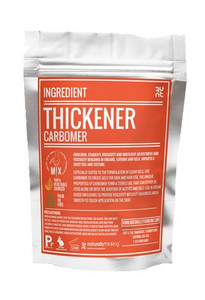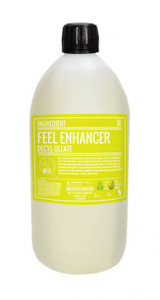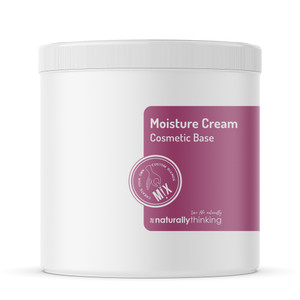
Hyaluronic acid
Hyaluronic acid is naturally occurring in the human body. A connective tissue organizer and hydrating substance, it is the most hydrating polymer known and can hold over 600X its own weight in water, giving skin volume and fullness
Hyaluronic acid is a linear polysaccharide of high molecular weight, naturally occurring in the human body. A connective tissue organizer and hydrating substance, it is the most hydrating polymer known and can hold over 600X its own weight in water, giving skin volume and fullness
Hyaluronic acid
Hyaluronic acid is a linear polysaccharide of high molecular weight, naturally occurring in the human body. It is applied here as a connective tissue organizer and hydrating substance on the basis of its status as the most hydrating polymer known
The enormous water-binding capacity of hyaluronan is an essential characteristic influencing its biological effects, and , as it is a naturally occuring substance, Hyaluronic acid is free of immunogenic activity, and is a non-toxic and non-irritating substance.
Skin hydration is the cornerstone of the anti-aging concept for the simple reason that adequate water content is essential for the proper functioning of all of the human body’s structures. With a certain degree of exaggeration, ensuring hydration is a basic condition for the normalisation of the internal mechanisms affecting skin aging.
Generally Hyaluronic acid is non-irritating, non-cytotoxic and non-phototoxic
How Does Hyaluronic acid work?
Hyaluronic acid influences the internal processes happening in the skin in two ways.
The first is the formation of a film on the skins surface. This is a product of the physico-chemical properties of hyaluronan. The film hydrates the surface of the skin and prevents water loss. Effective and optimal hydration helps to maintain the epidermal barrier function and thereby contributes to suitable conditions for the cells of the epidermis and dermis. This aids the reduction in environmental influence, lowering cell stress.
The skin is soothed, due to the creation of a cool surface film and by the modulation of the environment for skin cells.
Skins texture can be improved mainly due to the ability to form a hydrating film on the surface which reaffirms the strong links between the individual signs of aging.
This moisturising film essentially macerates the stratum corneum and thus indirectly affects the disruption of intercellular structures in the stratum corneum and the integrity of the epidermis as a whole.
How to Use Hyaluronic acid
Commonly used between 1% and 10% in final formulations.
Hyaluronic acid is water soluble and thus cannot be directly mixed with oil. It can be added to creams and lotions as part of the normal production process. When used in Creams and Lotions, it should be added to the cool down stage of the production.
Heating to 90c for 45 minutes can lead to the molecular weight decrease of up to 20%, so heat should always be avoided as much as possible during processing.
Sensitive to both low and high pH. Extreme values lead to molecular weight decrease, which is further enhanced by product heating. Use a pH tolerant preservative in final formulation of hyaluronic acid formulations.
Hyaluronic acid is incompatible with cationic substances e.g. surfactants or polymers (Polyquarternium-4, Polyquarternium-10 etc.)
Solubility of Hyaluronic acid
Hyaluronic acid is fully soluble in water. It is also soluble in a mixture of ethylalcohol, isopropylalcohol propylene glycol and butylene glycol with water up to a ration of 1:1.
Hyaluronic acid is not soluble in non-water miscible solvents
- Skin Type:
- All to Dry
- Key Benefits:
- Hyaluronic acid provides a skin film that acts as a barrier attracting and trapping moisture for antiaging effects
- Size:
- 30g - 1kg
- Form:
- Gel
- Soluble in Water:
- Yes
- Soluble in Oil:
- No
- Soluble Alcohol:
- No
- HS Code:
- 33049990
- HS Description:
- Hylauronic acid skin gel
- HS Country:
- GB
- HS Composition:
- Gel
Ingredients
You can view the full ingredients by Clicking Here
Hyaluronic acid Safety Data Sheet (SDS)
Hyaluronic acid The SDS can be downloaded by Clicking Here
Hyaluronic acid Technical Data Sheet (TDS)
Hyaluronic acid The TDS can be downloaded by Clicking Here
Hyaluronic acid Certificate of Analysis (COA)
Generate the certificate of analysis for your purchased product by entering your Batch Number which can be found on the packaging of your product.
Hyaluronic acid Allergens Declaration
Generate an allergens declaration for your purchase (essential oils only)
Customer Reviews
-
Hyaluronic acid
It's the best and my clients also love it! Thank you NaturallyThinking. Had delays in receiving it but that was all forgotten when I saw the cute thank you msg on the printed invoice and also how well packaged the items where. Truly appreciate. Definitely calling again.





